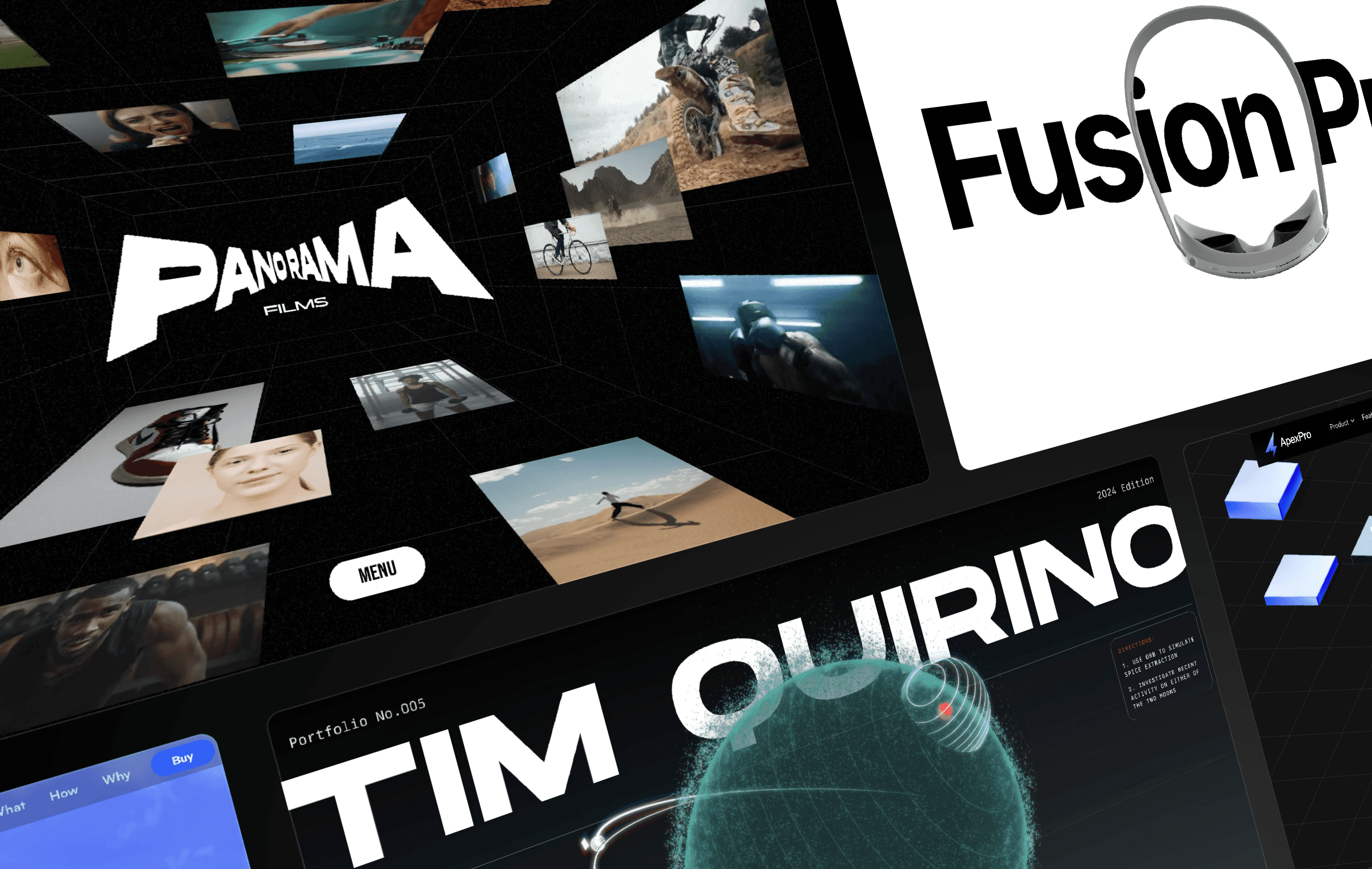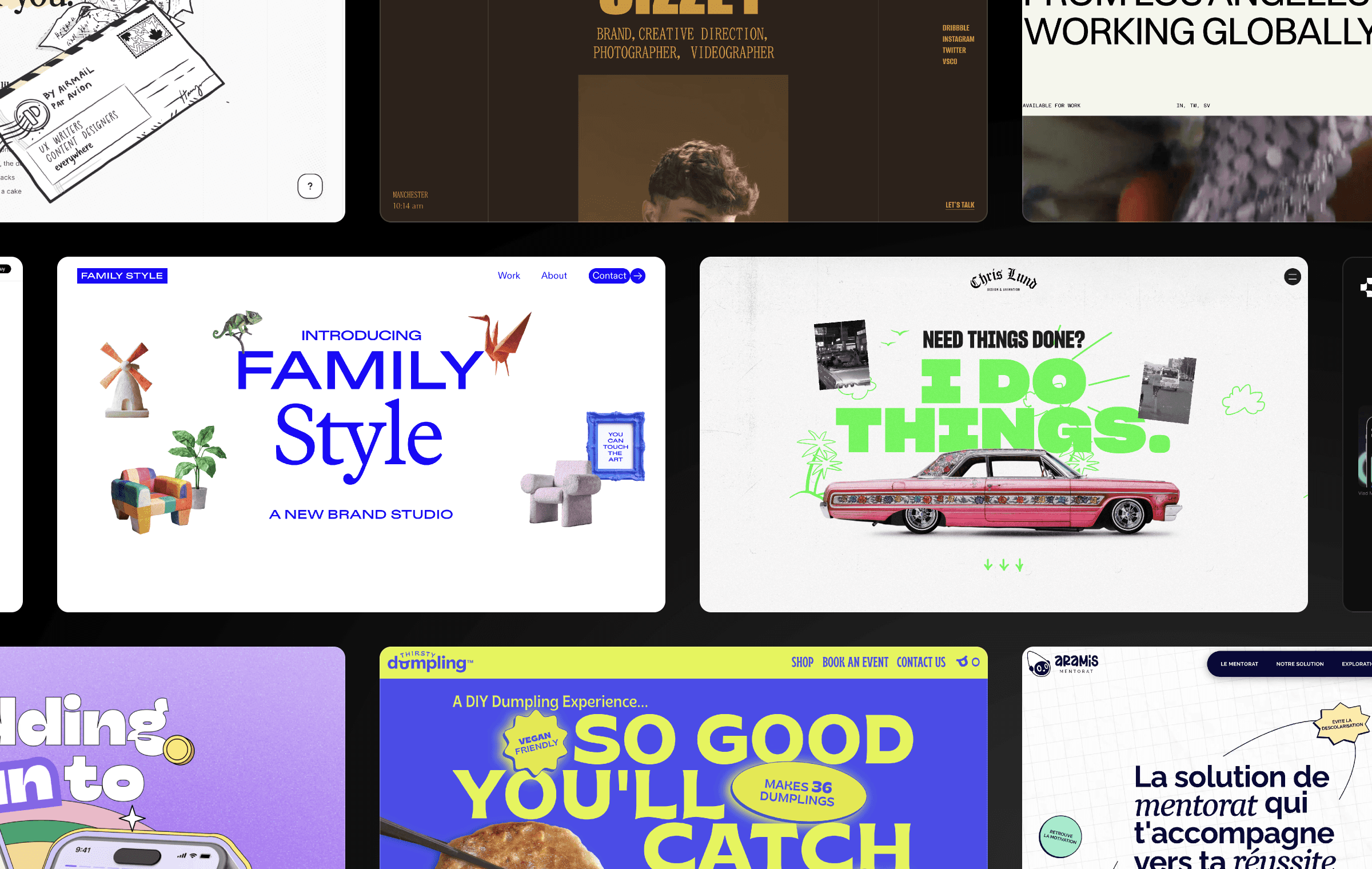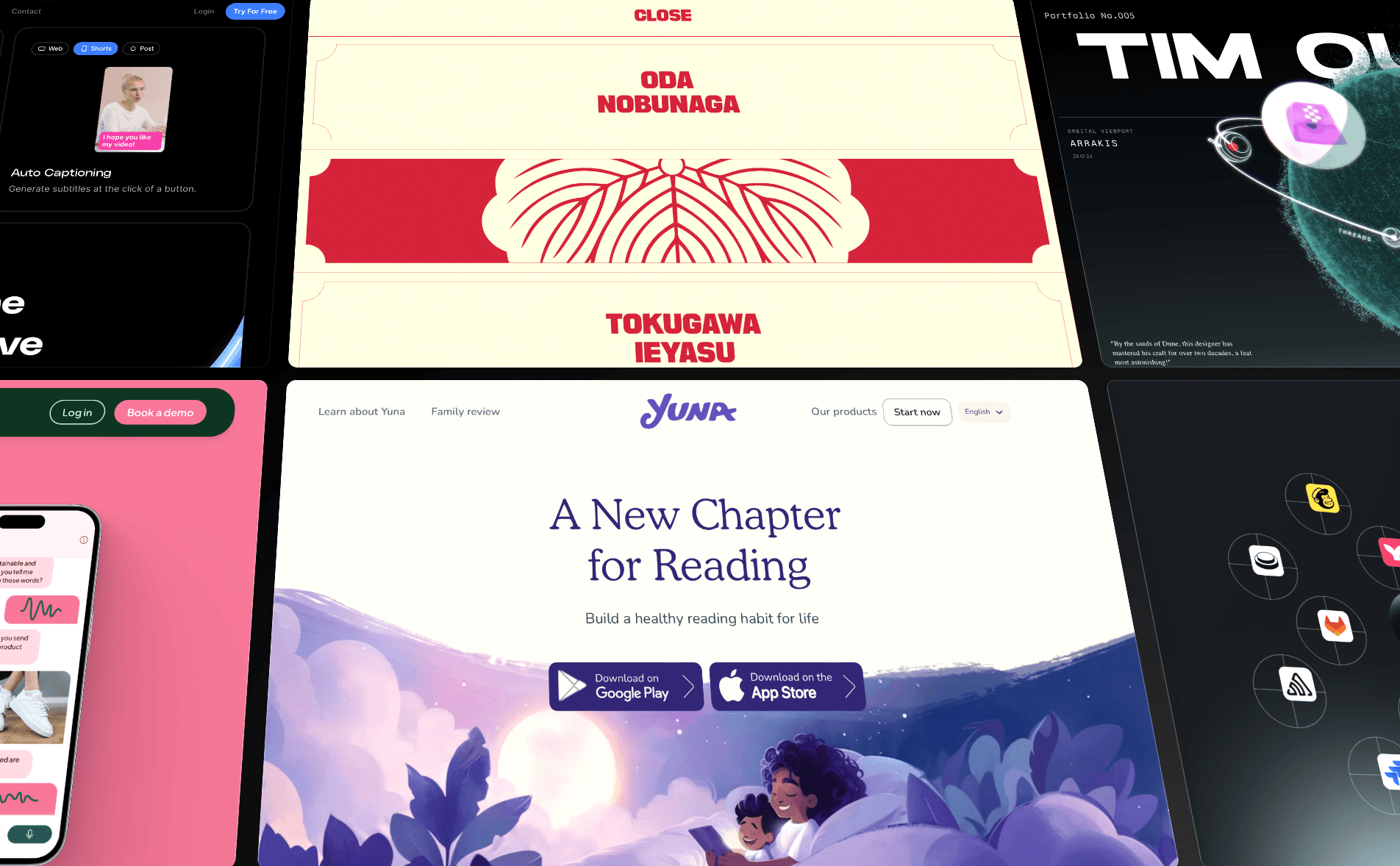


A great website doesn’t just look good—it tells a story that resonates with visitors and keeps them engaged. In web design, storytelling is key to creating an experience that goes beyond the ordinary.
That’s why we’re exploring seven websites built in Framer that master the art of storytelling, showing how design and narrative can work hand-in-hand. These sites demonstrate how to transform a website into an interactive journey, making each scroll feel like part of a larger narrative. If you’re looking to bring your own story to life online, these examples are sure to inspire fresh ideas and new approaches. Let’s dive in.
1. Height

The Height website grabs your attention right away with its unique time traveler analogy, comparing product building to envisioning the future. This idea instantly draws you in, making the platform’s story both interesting and easy to relate to.
The site’s design is clean and simple, with a continuous line that guides you smoothly from one section to the next. Subtle animations add a touch of movement, keeping things engaging without being overwhelming. Paired with clear and thoughtful writing, the website keeps you interested from start to finish.
2. NOLO

The NOLO case study website perfectly weaves together sections to show how the platform makes saving money fun and accessible in smaller cities. It invites visitors into a story about financial inclusion and how games and rewards help people build good saving habits.
The website’s bright and playful design reflects the app’s energy, enticing visitors right away. As you scroll, it feels like going through a presentation, with each section like a new slide that introduces NOLO’s goals, the challenges it solves, and the creative ways it helps users. The clear writing and smooth animations keep the story engaging, motivating visitors to explore the entire case study till the end of the page.
3. Unifiers of Japan

From the moment you arrive on the Unifiers of Japan website, you’re captivated by its dynamic visuals and mesmerizing animations, setting the stage for an epic historical journey. This site isn’t just a tribute to Oda Nobunaga; it’s a portal into the life of the legendary leader who began the unification of Japan.
The website masterfully weaves together bold graphics and fluid animations to bring Nobunaga’s story to life. Each visual and interactive element is purposefully designed to deepen the narrative. As you scroll, the story unfolds seamlessly, with each transition enhancing your connection to the history being told.
4. Melnūdens Coffee

The Melnūdens Coffee website does more than just introduce a specialty coffee brand—it takes visitors on a journey through the story of their coffee from bean to cup. The site tells the brand’s origin story, how they source high-quality beans, and the process of roasting and blending to create the perfect brew.
The website’s sleek design and subtle animations add to the storytelling, making the experience feel lively and engaging. As visitors explore the page, they’re guided through each stage of the coffee-making process and the brand’s dedication to their craft. This turns a simple product showcase into an immersive story, inviting coffee lovers to connect with the brand on a deeper level.
5. Cancel Culture

The “Cancel Culture” website takes a daring approach by reimagining how Abraham Lincoln might be “canceled” in today’s world. The site delves into the more controversial parts of Lincoln’s presidency, challenging visitors to think about how history is judged by modern standards.
Visually, the website is striking, paired with bold animations and colors that bring the story to life. A standout feature is an interactive map of the United States, showing cities named after Lincoln. When you click the "Cancel Lincoln" button, the city names get crossed out, symbolizing the idea of erasing his legacy. This combination of interactivity and storytelling makes the website both thought-provoking and engaging, encouraging people to reflect on the deeper themes it presents.
6. Mars Rejects

Mars Rejects is a collection of 10,000 unique NFT characters, and its website tells a powerful story through its design. The site feels like a living comic book—pulling visitors into a dystopian world where Earth is destroyed, and only the most influential people escape to Mars. Those left behind become the "Mars Rejects," creating a strong theme for the collection.
The website’s art and animations bring this story to life. The characters are carefully designed in a hand-drawn comic book style, which highlights the connection between art and technology. Each section of the site uncovers different parts of the story, with visuals and narrative working together to create an absorbing and immersive experience.
7. Punkt

When you visit the Punkt website, you’ll notice right away how its design feels like you’re sketching on paper—a nod to the hands-on work of UX writers. This familiar feel makes the site instantly relatable.
A highlight of the site is a graphic featuring a blender filled with messy content, symbolizing the chaos of trying to fit mismatched text into designs. Upon interaction, the blender mixes everything up, illustrating the challenge of constant rewrites. Further down, a squiggly line with the words "chaos everywhere" captures the daily struggles of the job. This creative design not only shows what Punkt can do but also connects with the audience by speaking directly to their needs.
How to make an effective storytelling website
Building a storytelling website requires a thoughtful blend of design, content, and functionality. Here’s a structured plan to help you build a site in Framer that effectively tells your story.
Step 1: Visualize your story
Start by visualizing how you want to present your story on your website. With Framer’s free-form canvas, you have the creative freedom to design without limits. Customize every detail to craft a layout that authentically represents the story you want to share.
Step 2: Choose the right typography
Consider how typography will enhance your storytelling. The right font can set the tone and mood for your narrative. Framer offers a rich library of built-in and custom fonts that allows you to select the perfect typeface for your story.
Step 3: Connect your pages and sections
To create a cohesive storytelling experience, you need to guide visitors through your site in a logical and engaging way. Framer’s navigation tools make it easy to link different pages and sections, allowing you to take users on a journey through your narrative.
Step 4: Add interactive elements
Interactive elements can make your story more captivating. Framer’s web animations, like appear and scroll effects, enable you to add subtle motion and transitions that make your site feel alive. These animations can highlight key parts of your story without distracting from the overall content, adding depth and interest to your design.
Step 5: Refine with AI
Your narrative should be as polished as your design. Framer’s AI rewrite feature can help you refine your text, so it’s clear and more impactful. Whether you need to adjust your wording or enhance the flow of your story, AI can assist in fine-tuning your content to match the high quality of your visual design.
Bring your website to life with storytelling
Storytelling is more than just a trend—it’s a powerful way to connect with people. When integrated with web design, a website can transform into an engaging journey that draws people in and keeps them invested.
Ready to create a website that tells your story in a way that stands out? Dive into our gallery for fresh inspiration and ideas, and sign up to Framer to start building a storytelling website that leaves a lasting impression on every visitor.
That’s why we’re exploring seven websites built in Framer that master the art of storytelling, showing how design and narrative can work hand-in-hand. These sites demonstrate how to transform a website into an interactive journey, making each scroll feel like part of a larger narrative. If you’re looking to bring your own story to life online, these examples are sure to inspire fresh ideas and new approaches. Let’s dive in.
1. Height

The Height website grabs your attention right away with its unique time traveler analogy, comparing product building to envisioning the future. This idea instantly draws you in, making the platform’s story both interesting and easy to relate to.
The site’s design is clean and simple, with a continuous line that guides you smoothly from one section to the next. Subtle animations add a touch of movement, keeping things engaging without being overwhelming. Paired with clear and thoughtful writing, the website keeps you interested from start to finish.
2. NOLO

The NOLO case study website perfectly weaves together sections to show how the platform makes saving money fun and accessible in smaller cities. It invites visitors into a story about financial inclusion and how games and rewards help people build good saving habits.
The website’s bright and playful design reflects the app’s energy, enticing visitors right away. As you scroll, it feels like going through a presentation, with each section like a new slide that introduces NOLO’s goals, the challenges it solves, and the creative ways it helps users. The clear writing and smooth animations keep the story engaging, motivating visitors to explore the entire case study till the end of the page.
3. Unifiers of Japan

From the moment you arrive on the Unifiers of Japan website, you’re captivated by its dynamic visuals and mesmerizing animations, setting the stage for an epic historical journey. This site isn’t just a tribute to Oda Nobunaga; it’s a portal into the life of the legendary leader who began the unification of Japan.
The website masterfully weaves together bold graphics and fluid animations to bring Nobunaga’s story to life. Each visual and interactive element is purposefully designed to deepen the narrative. As you scroll, the story unfolds seamlessly, with each transition enhancing your connection to the history being told.
4. Melnūdens Coffee

The Melnūdens Coffee website does more than just introduce a specialty coffee brand—it takes visitors on a journey through the story of their coffee from bean to cup. The site tells the brand’s origin story, how they source high-quality beans, and the process of roasting and blending to create the perfect brew.
The website’s sleek design and subtle animations add to the storytelling, making the experience feel lively and engaging. As visitors explore the page, they’re guided through each stage of the coffee-making process and the brand’s dedication to their craft. This turns a simple product showcase into an immersive story, inviting coffee lovers to connect with the brand on a deeper level.
5. Cancel Culture

The “Cancel Culture” website takes a daring approach by reimagining how Abraham Lincoln might be “canceled” in today’s world. The site delves into the more controversial parts of Lincoln’s presidency, challenging visitors to think about how history is judged by modern standards.
Visually, the website is striking, paired with bold animations and colors that bring the story to life. A standout feature is an interactive map of the United States, showing cities named after Lincoln. When you click the "Cancel Lincoln" button, the city names get crossed out, symbolizing the idea of erasing his legacy. This combination of interactivity and storytelling makes the website both thought-provoking and engaging, encouraging people to reflect on the deeper themes it presents.
6. Mars Rejects

Mars Rejects is a collection of 10,000 unique NFT characters, and its website tells a powerful story through its design. The site feels like a living comic book—pulling visitors into a dystopian world where Earth is destroyed, and only the most influential people escape to Mars. Those left behind become the "Mars Rejects," creating a strong theme for the collection.
The website’s art and animations bring this story to life. The characters are carefully designed in a hand-drawn comic book style, which highlights the connection between art and technology. Each section of the site uncovers different parts of the story, with visuals and narrative working together to create an absorbing and immersive experience.
7. Punkt

When you visit the Punkt website, you’ll notice right away how its design feels like you’re sketching on paper—a nod to the hands-on work of UX writers. This familiar feel makes the site instantly relatable.
A highlight of the site is a graphic featuring a blender filled with messy content, symbolizing the chaos of trying to fit mismatched text into designs. Upon interaction, the blender mixes everything up, illustrating the challenge of constant rewrites. Further down, a squiggly line with the words "chaos everywhere" captures the daily struggles of the job. This creative design not only shows what Punkt can do but also connects with the audience by speaking directly to their needs.
How to make an effective storytelling website
Building a storytelling website requires a thoughtful blend of design, content, and functionality. Here’s a structured plan to help you build a site in Framer that effectively tells your story.
Step 1: Visualize your story
Start by visualizing how you want to present your story on your website. With Framer’s free-form canvas, you have the creative freedom to design without limits. Customize every detail to craft a layout that authentically represents the story you want to share.
Step 2: Choose the right typography
Consider how typography will enhance your storytelling. The right font can set the tone and mood for your narrative. Framer offers a rich library of built-in and custom fonts that allows you to select the perfect typeface for your story.
Step 3: Connect your pages and sections
To create a cohesive storytelling experience, you need to guide visitors through your site in a logical and engaging way. Framer’s navigation tools make it easy to link different pages and sections, allowing you to take users on a journey through your narrative.
Step 4: Add interactive elements
Interactive elements can make your story more captivating. Framer’s web animations, like appear and scroll effects, enable you to add subtle motion and transitions that make your site feel alive. These animations can highlight key parts of your story without distracting from the overall content, adding depth and interest to your design.
Step 5: Refine with AI
Your narrative should be as polished as your design. Framer’s AI rewrite feature can help you refine your text, so it’s clear and more impactful. Whether you need to adjust your wording or enhance the flow of your story, AI can assist in fine-tuning your content to match the high quality of your visual design.
Bring your website to life with storytelling
Storytelling is more than just a trend—it’s a powerful way to connect with people. When integrated with web design, a website can transform into an engaging journey that draws people in and keeps them invested.
Ready to create a website that tells your story in a way that stands out? Dive into our gallery for fresh inspiration and ideas, and sign up to Framer to start building a storytelling website that leaves a lasting impression on every visitor.
That’s why we’re exploring seven websites built in Framer that master the art of storytelling, showing how design and narrative can work hand-in-hand. These sites demonstrate how to transform a website into an interactive journey, making each scroll feel like part of a larger narrative. If you’re looking to bring your own story to life online, these examples are sure to inspire fresh ideas and new approaches. Let’s dive in.
1. Height

The Height website grabs your attention right away with its unique time traveler analogy, comparing product building to envisioning the future. This idea instantly draws you in, making the platform’s story both interesting and easy to relate to.
The site’s design is clean and simple, with a continuous line that guides you smoothly from one section to the next. Subtle animations add a touch of movement, keeping things engaging without being overwhelming. Paired with clear and thoughtful writing, the website keeps you interested from start to finish.
2. NOLO

The NOLO case study website perfectly weaves together sections to show how the platform makes saving money fun and accessible in smaller cities. It invites visitors into a story about financial inclusion and how games and rewards help people build good saving habits.
The website’s bright and playful design reflects the app’s energy, enticing visitors right away. As you scroll, it feels like going through a presentation, with each section like a new slide that introduces NOLO’s goals, the challenges it solves, and the creative ways it helps users. The clear writing and smooth animations keep the story engaging, motivating visitors to explore the entire case study till the end of the page.
3. Unifiers of Japan

From the moment you arrive on the Unifiers of Japan website, you’re captivated by its dynamic visuals and mesmerizing animations, setting the stage for an epic historical journey. This site isn’t just a tribute to Oda Nobunaga; it’s a portal into the life of the legendary leader who began the unification of Japan.
The website masterfully weaves together bold graphics and fluid animations to bring Nobunaga’s story to life. Each visual and interactive element is purposefully designed to deepen the narrative. As you scroll, the story unfolds seamlessly, with each transition enhancing your connection to the history being told.
4. Melnūdens Coffee

The Melnūdens Coffee website does more than just introduce a specialty coffee brand—it takes visitors on a journey through the story of their coffee from bean to cup. The site tells the brand’s origin story, how they source high-quality beans, and the process of roasting and blending to create the perfect brew.
The website’s sleek design and subtle animations add to the storytelling, making the experience feel lively and engaging. As visitors explore the page, they’re guided through each stage of the coffee-making process and the brand’s dedication to their craft. This turns a simple product showcase into an immersive story, inviting coffee lovers to connect with the brand on a deeper level.
5. Cancel Culture

The “Cancel Culture” website takes a daring approach by reimagining how Abraham Lincoln might be “canceled” in today’s world. The site delves into the more controversial parts of Lincoln’s presidency, challenging visitors to think about how history is judged by modern standards.
Visually, the website is striking, paired with bold animations and colors that bring the story to life. A standout feature is an interactive map of the United States, showing cities named after Lincoln. When you click the "Cancel Lincoln" button, the city names get crossed out, symbolizing the idea of erasing his legacy. This combination of interactivity and storytelling makes the website both thought-provoking and engaging, encouraging people to reflect on the deeper themes it presents.
6. Mars Rejects

Mars Rejects is a collection of 10,000 unique NFT characters, and its website tells a powerful story through its design. The site feels like a living comic book—pulling visitors into a dystopian world where Earth is destroyed, and only the most influential people escape to Mars. Those left behind become the "Mars Rejects," creating a strong theme for the collection.
The website’s art and animations bring this story to life. The characters are carefully designed in a hand-drawn comic book style, which highlights the connection between art and technology. Each section of the site uncovers different parts of the story, with visuals and narrative working together to create an absorbing and immersive experience.
7. Punkt

When you visit the Punkt website, you’ll notice right away how its design feels like you’re sketching on paper—a nod to the hands-on work of UX writers. This familiar feel makes the site instantly relatable.
A highlight of the site is a graphic featuring a blender filled with messy content, symbolizing the chaos of trying to fit mismatched text into designs. Upon interaction, the blender mixes everything up, illustrating the challenge of constant rewrites. Further down, a squiggly line with the words "chaos everywhere" captures the daily struggles of the job. This creative design not only shows what Punkt can do but also connects with the audience by speaking directly to their needs.
How to make an effective storytelling website
Building a storytelling website requires a thoughtful blend of design, content, and functionality. Here’s a structured plan to help you build a site in Framer that effectively tells your story.
Step 1: Visualize your story
Start by visualizing how you want to present your story on your website. With Framer’s free-form canvas, you have the creative freedom to design without limits. Customize every detail to craft a layout that authentically represents the story you want to share.
Step 2: Choose the right typography
Consider how typography will enhance your storytelling. The right font can set the tone and mood for your narrative. Framer offers a rich library of built-in and custom fonts that allows you to select the perfect typeface for your story.
Step 3: Connect your pages and sections
To create a cohesive storytelling experience, you need to guide visitors through your site in a logical and engaging way. Framer’s navigation tools make it easy to link different pages and sections, allowing you to take users on a journey through your narrative.
Step 4: Add interactive elements
Interactive elements can make your story more captivating. Framer’s web animations, like appear and scroll effects, enable you to add subtle motion and transitions that make your site feel alive. These animations can highlight key parts of your story without distracting from the overall content, adding depth and interest to your design.
Step 5: Refine with AI
Your narrative should be as polished as your design. Framer’s AI rewrite feature can help you refine your text, so it’s clear and more impactful. Whether you need to adjust your wording or enhance the flow of your story, AI can assist in fine-tuning your content to match the high quality of your visual design.
Bring your website to life with storytelling
Storytelling is more than just a trend—it’s a powerful way to connect with people. When integrated with web design, a website can transform into an engaging journey that draws people in and keeps them invested.
Ready to create a website that tells your story in a way that stands out? Dive into our gallery for fresh inspiration and ideas, and sign up to Framer to start building a storytelling website that leaves a lasting impression on every visitor.

Step into the future of design
Step into the future of design
Step into the future of design
Join thousands using Framer to build high-performing websites fast.
Join thousands using Framer to build high-performing websites fast.
Join thousands using Framer to build high-performing websites fast.












